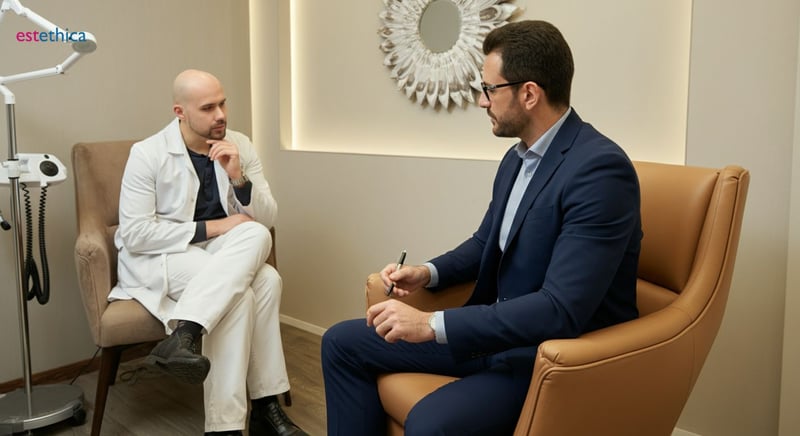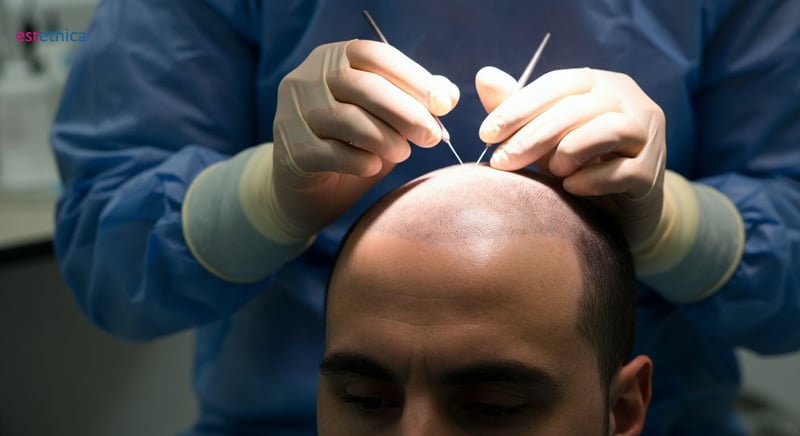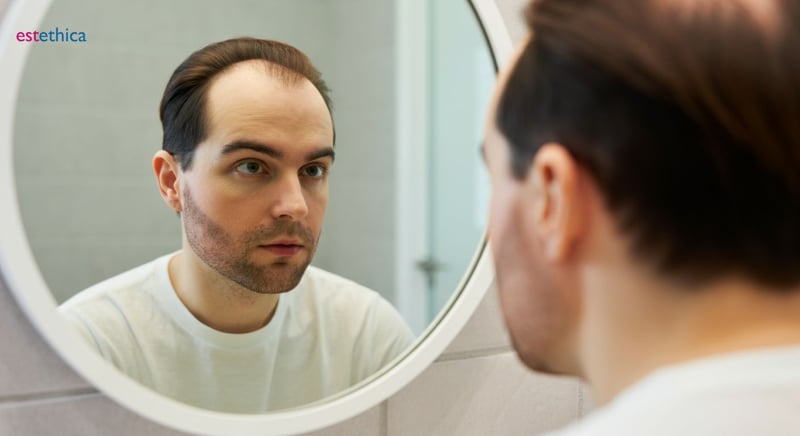Discover Hair Transplant: Transform Your Look
Uncover how hair transplants can redefine your appearance and boost confidence. Dive into techniques and solutions for lasting results.
Discover Hair Transplant: Transform Your Look
Are you struggling with hair loss and seeking a solution that can transform not only your appearance but also your confidence? Hair transplant offers a ray of hope and has become a significant choice for those looking to restore their hairline and rejuvenate their look. This comprehensive guide will explore everything from the basic understanding of hair transplantation to detailed procedural insights, showcasing the latest techniques and answering essential questions about the permanence and effectiveness of hair restoration. Welcome to your journey towards a fuller, revitalized version of yourself.
Understanding Hair Transplantation: The Basics
Exploring the Benefits of Hair Transplantation
Hair transplantation offers a transformative solution for those experiencing hair loss. This surgical hair transplant technique not only restores a natural hairline but also significantly enhances personal confidence. For instance, many individuals report a renewed sense of self-esteem after undergoing the procedure. Additionally, the permanence of hair transplant results is a major advantage, as it eliminates the need for ongoing treatments. Unlike temporary solutions, a hair transplant provides lasting results, making it a preferred choice for many.
- Restores natural hairline with precision and accuracy.
- Boosts self-esteem and enhances personal appearance.
- Offers a permanent solution, unlike temporary hair restoration methods.
Moreover, the procedure is versatile, allowing for hairline transplant, brow transplant, and even beard restoration. This adaptability makes it suitable for various needs and preferences. For those considering a hair transplant, understanding the benefits can guide informed decision-making.
The Hair Transplant Process: Step-by-Step
- Consultation: Assessing hair loss and determining the best approach.
- Follicular Unit Extraction: Harvesting hair follicles from the donor site.
- Transplantation: Implanting follicles into the recipient site for natural growth.
Each step in the hair transplant process is crucial for achieving optimal results. During the consultation, specialists evaluate the extent of hair loss and discuss potential outcomes. The follicular unit extraction phase involves carefully removing hair follicles, ensuring minimal scarring. Finally, the transplantation phase focuses on placing the follicles in a way that mimics natural hair growth patterns. This meticulous approach ensures that the results are both natural-looking and enduring.
For more insights into how hair transplants can transform lives, explore our detailed guide here.

How Hair Transplant Surgery Works: A Step-by-Step Guide
Understanding Hair Transplant Techniques
Hair transplant surgery involves two primary techniques: Follicular Unit Transplantation (FUT) and Follicular Unit Extraction (FUE). Each method offers unique benefits tailored to patient needs. FUT, for instance, is ideal for those requiring a larger number of grafts, as it involves removing a strip of scalp and dissecting it into individual grafts. This technique is beneficial for achieving high-density hair restoration.
- FUT is suitable for patients needing extensive hair restoration.
- FUE offers a less invasive option with minimal scarring.
- Both techniques ensure natural-looking results.
On the other hand, FUE is preferred by those seeking a less invasive procedure with minimal scarring. It involves extracting individual follicles directly from the scalp, making it a popular choice for those concerned about visible scars. Both techniques, when performed by skilled surgeons, can yield natural-looking results, enhancing the patient's appearance and confidence.
Post-Surgery Care and Expectations
Post-surgery care is crucial for the success of hair transplant surgery. Patients receive detailed guidelines to ensure optimal healing and hair growth. These guidelines typically include instructions on how to wash the scalp, avoid strenuous activities, and protect the transplanted area from direct sunlight.
- Follow post-operative care instructions for optimal healing.
- Attend follow-up appointments to monitor progress.
- Expect gradual hair growth over several months.
Regular follow-up appointments are essential to monitor progress and address any concerns. Patients should expect gradual hair growth, with noticeable improvements typically seen within a few months. This period allows the transplanted hair to integrate naturally with existing hair, ensuring a seamless and natural appearance. By adhering to post-surgery care instructions, patients can maximize the benefits of their hair restoration journey.

Exploring Hair Restoration Techniques: FUE and More
Innovative Hair Restoration Techniques
In the quest for that perfect hairline, understanding the different hair restoration techniques is crucial. Follicular Unit Extraction (FUE) stands out as a leading method, known for minimal scarring and faster recovery. During FUE, individual hair follicles are gently harvested and transplanted to the desired areas. Another innovative technique is Direct Hair Implantation (DHI), which uses a pen-like instrument for implantation, enhancing precision.
- FUE offers minimal scarring and quick recovery.
- DHI enhances precision with a pen-like instrument.
- Both techniques provide natural-looking results.
Beyond these, scalp micropigmentation and laser treatments are emerging as complementary options. These techniques can provide density illusion and stimulate growth, respectively. By combining several methods, patients can achieve a holistic approach to hair restoration.
Understanding the Popularity of Hair Restoration Methods
Hair restoration techniques have gained popularity due to their effectiveness and versatility. For instance, FUE is favored for its minimal invasiveness, making it suitable for those concerned about visible scars. Meanwhile, DHI's precision appeals to individuals seeking detailed and accurate results. Additionally, scalp micropigmentation offers a non-surgical option for those looking to enhance hair density visually.
- FUE: Ideal for minimal scarring and quick recovery.
- DHI: Preferred for precision and detailed results.
- Scalp Micropigmentation: Non-surgical option for visual density.
These methods cater to diverse needs, from those desiring a full hairline transplant to individuals interested in a brow transplant. The adaptability of these techniques ensures that patients can find a solution tailored to their specific hair restoration goals. As these methods continue to evolve, they offer promising outcomes for those seeking to restore their hair and confidence.

Is Hair Transplant Permanent? What You Need to Know
Factors Influencing Hair Transplant Longevity
Hair transplant results are generally permanent due to the genetic resistance of transplanted hair to DHT, a hormone linked to hair loss. However, the success and longevity of a hair transplant depend on several factors. Choosing experienced professionals is crucial, as their expertise ensures the quality and alignment of grafts, which significantly impacts the lifespan of the transplanted hair.
- Experienced professionals ensure optimal graft quality and alignment.
- Adhering to post-surgery care routines enhances transplant success.
- Advanced techniques improve patient outcomes and hair longevity.
Adhering to prescribed post-surgery care routines is equally important. Proper care helps in the healing process and supports the integration of transplanted hair with existing hair. Advanced techniques, such as follicular unit extraction and scalp micropigmentation, are continually improving patient outcomes, offering more natural and enduring results.
Understanding the Role of Graft Quality and Density
The quality and density of hair grafts play a pivotal role in the permanency of hair transplants. High-quality grafts ensure that the transplanted hair grows naturally and blends seamlessly with existing hair. Density is also crucial, as it affects the overall appearance and fullness of the hair.
- Assessing donor site for optimal graft quality.
- Ensuring proper density for natural-looking results.
- Aligning grafts to mimic natural hair growth patterns.
During the hair transplant process, assessing the donor site is essential to harvest high-quality grafts. Ensuring proper density and alignment of these grafts is vital for achieving natural-looking results. By focusing on these aspects, patients can enjoy a successful hair restoration journey, leading to lifelong satisfaction with their new hair.
Advanced Hair Restoration Techniques: FUE and DHI
Excellence in Hair Transplant Process and Care
Frequently Asked Questions
What are the main techniques used in hair transplant surgery?
Is a hair transplant a permanent solution for hair loss?
What is the recovery process like after a hair transplant?
How does Follicular Unit Extraction (FUE) differ from Direct Hair Implantation (DHI)?
What factors influence the success of a hair transplant?
Discover the path to your healthiest and most beautiful self with estethica's award-winning services. Call now for a free consultation and experience world-class care.
📞 Speak with Our Experts Today